These scallion buns are a reason to break out the steamer
They're soft, fluffy, and oh-so-flavorful
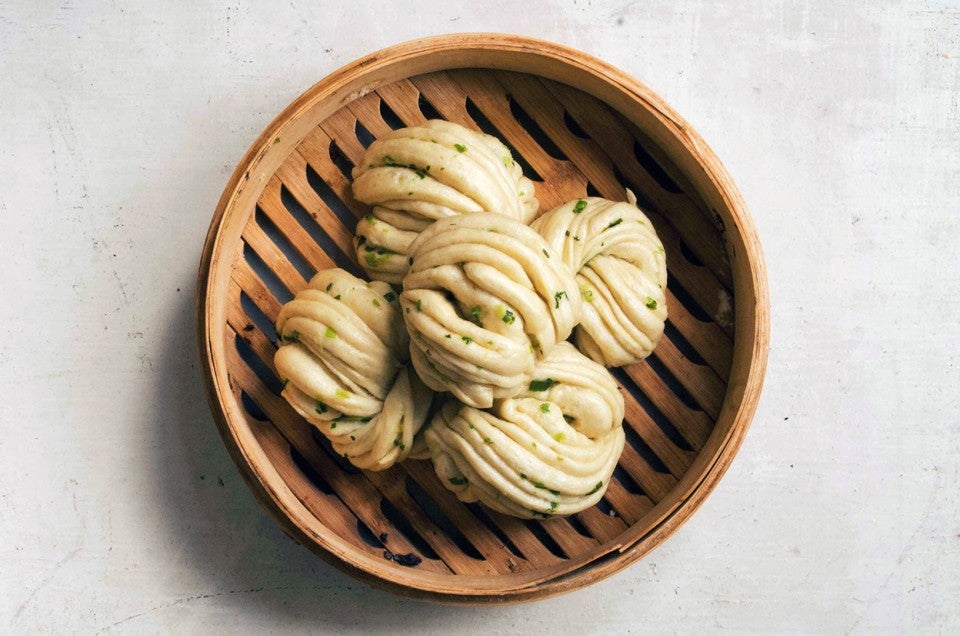

Blogger Frankie Gaw of Little Fat Boy learned to make these fragrant buns in his grandmother's kitchen, picking up essential baking knowledge along the way. Below, he shares this knowledge to help you experience the pleasure of freshly steamed scallion buns in your own home.
* * *
Scallion flower buns, also known as hua juan (花卷), are steamed, yeasted buns made of layers of dough and scallions. They’re fluffy in texture and nostalgic in memory for so many Chinese and Taiwanese-American immigrant kids like myself.
I grew up in a suburban household in Midwest Ohio, where my culinary world-view of carbohydrates mostly consisted of soft Wonder Bread, dry Ritz crackers, and my friends' pizza crusts (all things I still love today, matter of fact). But as an immigrant kid, oscillating between two cultures meant holding a yearly reservation to an exclusive bakery undisclosed to my American friends … also known as my grandma’s kitchen in Memphis, Tennessee.
This recipe for Scallion Buns is the same recipe that filled the countertops of that tiny Memphis kitchen, where my grandma kneaded the dough with biceps the size of twigs (but the veracity of a boxer's) to make a perfectly smooth dough. She shaped the buns, then steamed them in bamboo steamers (although any steamer can be used to make these), which enveloped her kitchen in a sauna of freshly baked dough, fragrant scallions, and woodiness from the bamboo.
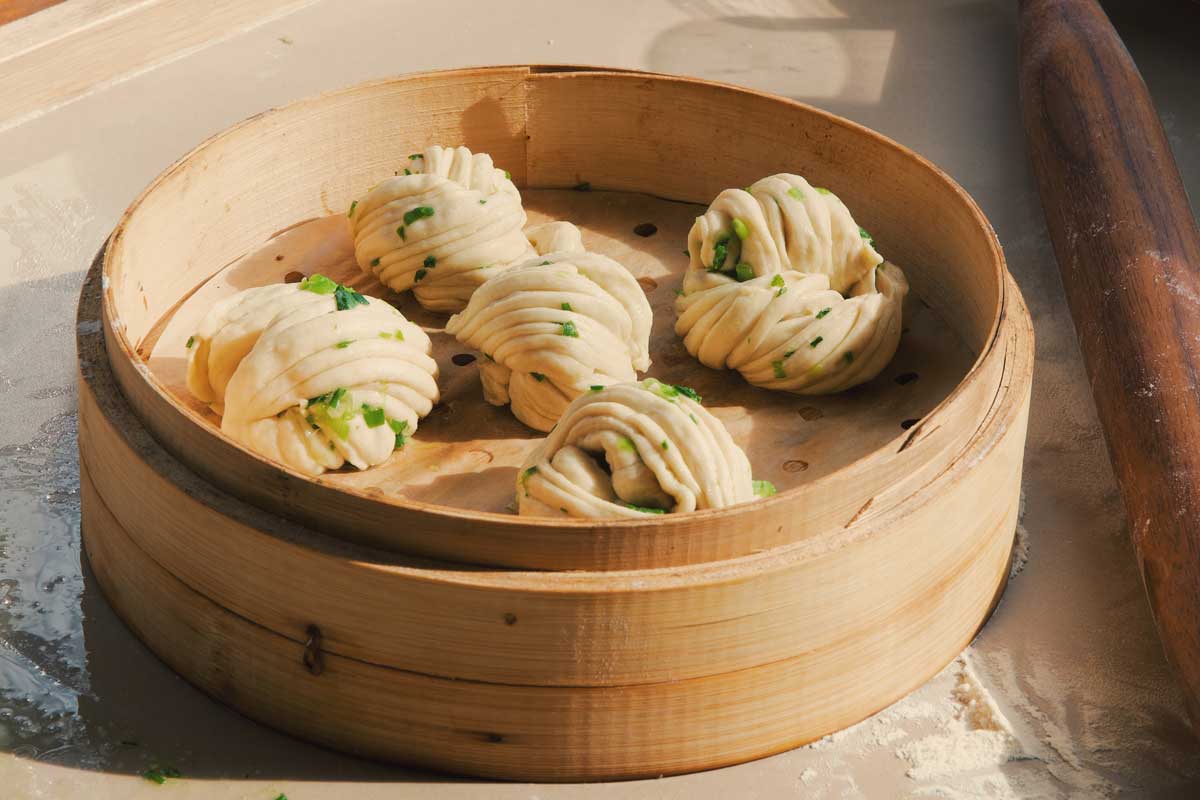
After watching my grandma make these buns throughout my childhood and eventually starting to make them myself, here are some tips I've picked up along the way.
This fact may be obvious to many people, but for years I actually had no clue that yeast could expire!
So I’m preaching from the mountaintops to say that your yeast can expire after about four months or so stored in the fridge, depending on the brand. Don’t be like me, where you follow the recipe down to the letter but the resulting buns are sad and dense because you’ve used expired yeast. The feeling you get upon such a result is exactly the same as when you salivate at luscious-looking McDonald’s menu photos, but the Big Mac you ordered is more like a squished pancake sitting in the rain.
Which is my long and rambling way to say: use top-quality unexpired yeast for optimal texture and flavor. It makes all the difference.
Baker's tip: Not sure if your yeast is still fresh? See this post on how to test yeast for freshness.
In the same way that American bread prides itself on a good crust and large, glutenous air pockets, Asian bread focuses on creating the softest and fluffiest texture possible. This often yields a cloud-like texture that's so springy you could squeeze it like a stress ball and still have it bounce back to its original shape.
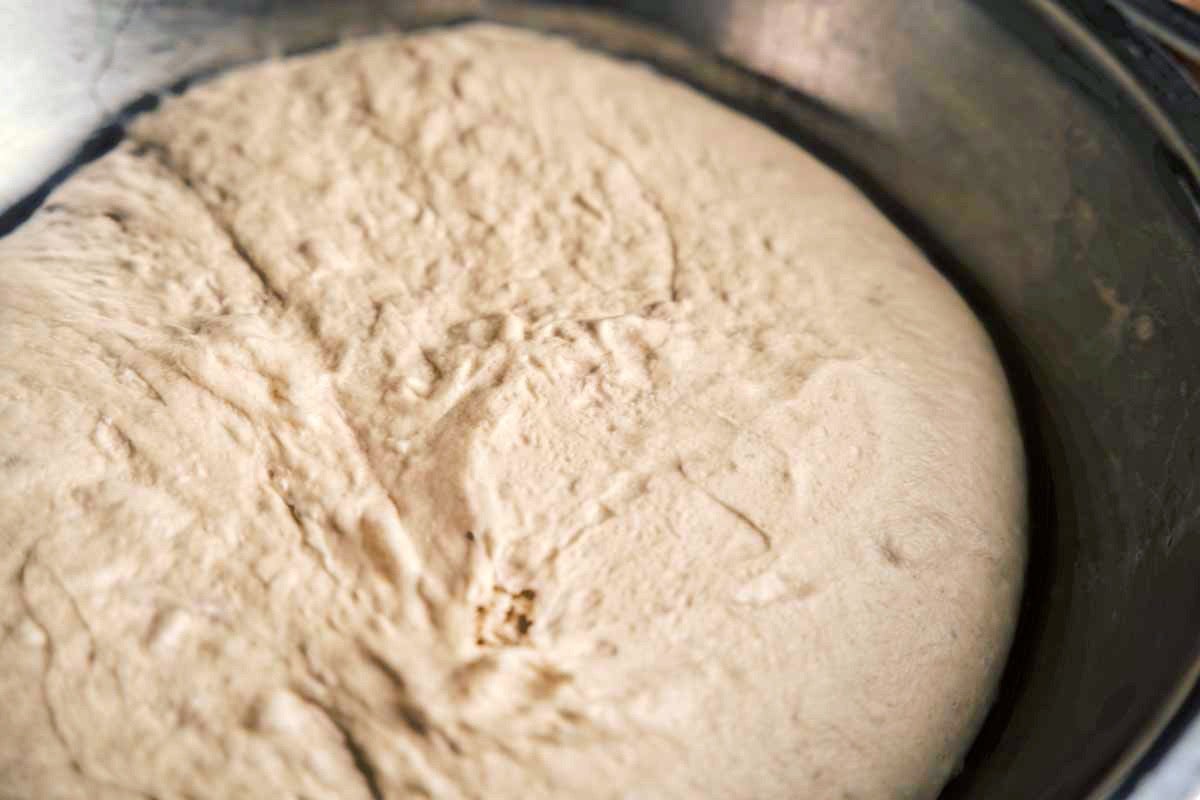
My grandma always taught me to knead steamed dough 500 times, which I’ve roughly estimated to be 10 minutes. This really allows the gluten strands in the dough to strengthen while also giving your arms a nice Arnold Schwarzenegger-pump, if kneading by hand. As you knead, you’ll notice how the bread flour transforms from a clumpy, heaping mass into an elastic, smooth ball. The dough is ready to proof when it’s as smooth and firm as a baby’s butt, a sure sign that it’s reached peak springiness for shaping and steaming.
The recipe page has instructions to shape these scallion flower buns traditionally, but for extra guidance, here's a video demonstrating how it's done. You might be a bit clumsy at first, but the more you practice, the easier this motion will be.
While traditional, this method is just one way to craft these buns. Whenever I have my friends over, I always tell them to shape their buns however they please and choose designs that inspire them. If you look up "steamed bun shapes" on YouTube, you’ll find a treasure trove of shapes from simple braids to artistic designs that look like flowers. Don’t be afraid to literally play with your dough like Play-Doh.
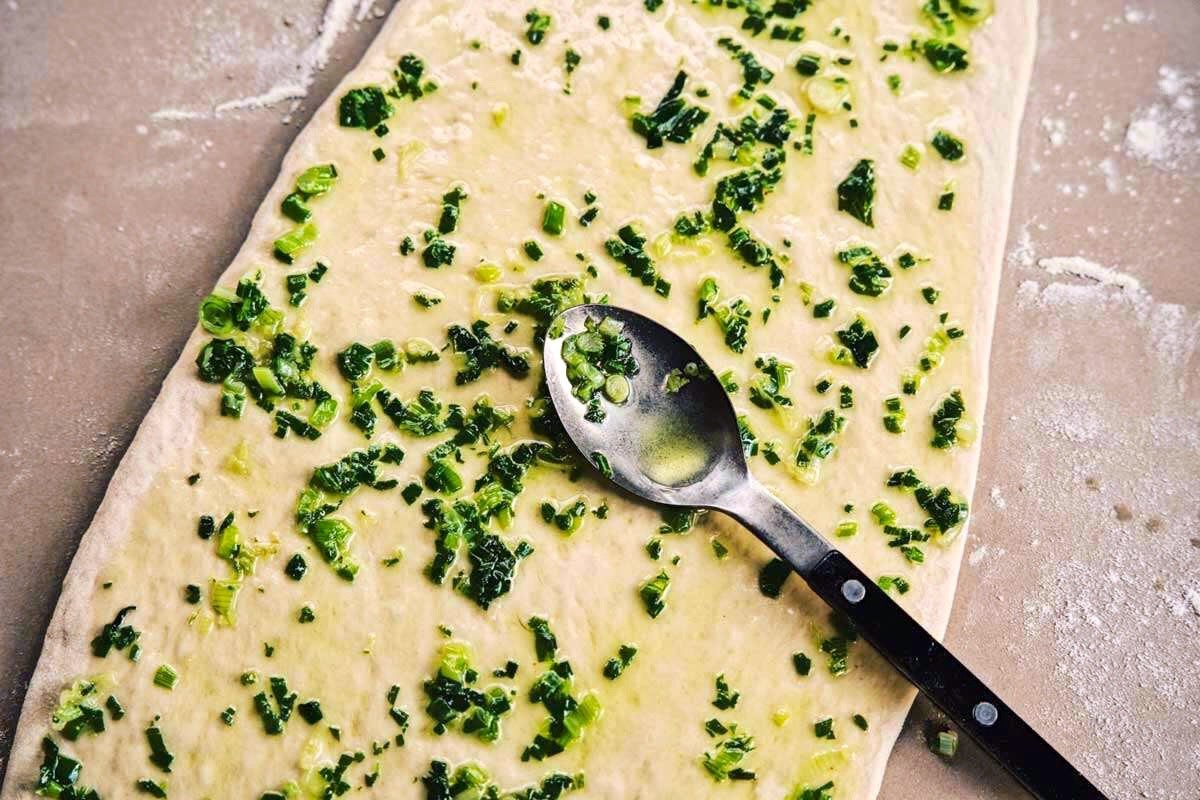
Whenever I create shapes beyond the traditional ones, the key goal I set for myself is to create multiple layers that allow the scallions to be distributed throughout. One of the joys of the traditional shaping method is that it allows for an eating experience that feels so unique to Taiwanese and Chinese baking: seemingly infinite dough layers and the joy that comes with pulling a bun apart and seeing it unravel.
I love steaming in a bamboo steamer, mostly because of the nostalgia and fragrance it brings to the kitchen, but you can use any steamer that goes on your stovetop.
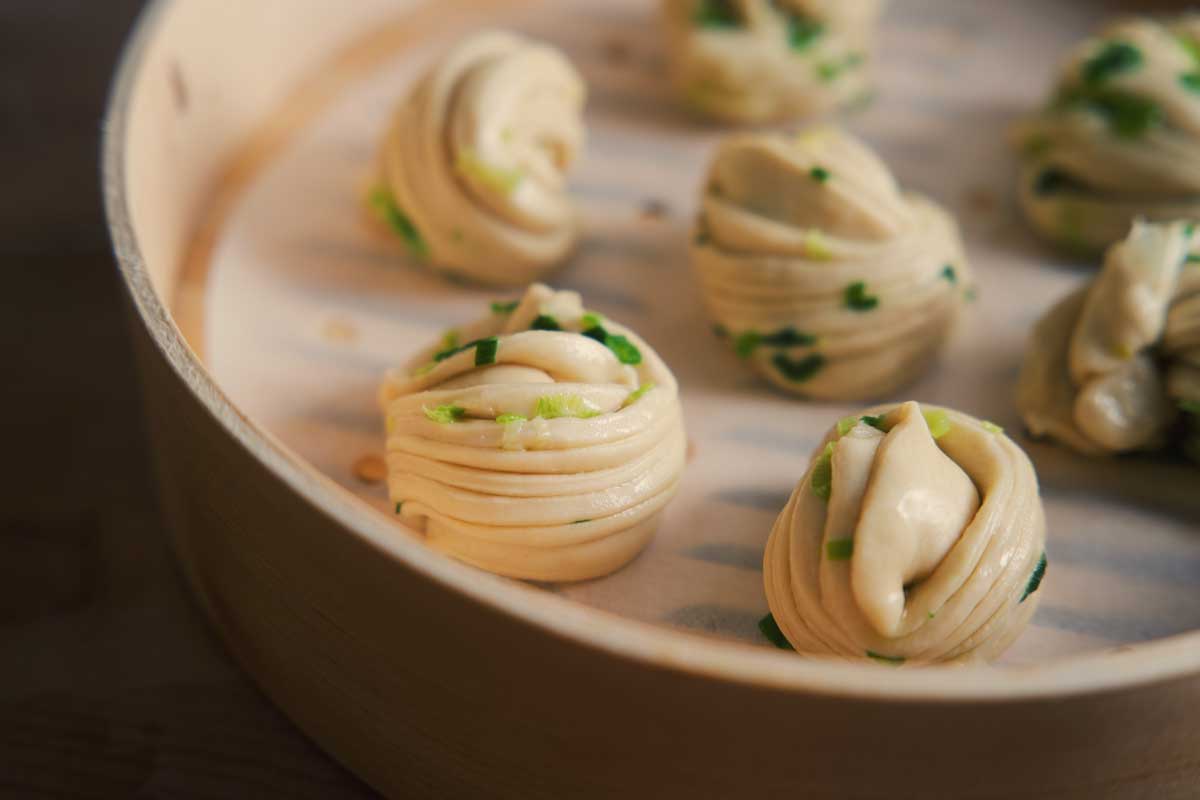
These scallion flower buns can be eaten at any time of the day, but my personal favorite way to enjoy them is for breakfast. I love recreating those mornings with my grandma, when I would walk down to her kitchen to find steamed buns and a scrambled egg on a plate, ready to be eaten together. You really can’t go wrong with putting an egg onto a carb, and this combination is no different. The savory egg complemented with the fragrance of scallions and the texture of a fluffy bun, all combined into an irresistible egg sandwich, really hits home.
To store these scallion buns, steam the buns until cooked, then keep covered at cool room temperature for a couple of days. You can also put them in a resealable container and stash in the freezer for longer storage. When ready to eat again, simply re-steam the buns for 10 to 12 minutes on the stovetop. If you’re on the go, you can take a shortcut by wrapping the frozen bun in a damp paper towel and microwaving for 1 minute. (I won’t judge your hastiness, as I do this a majority of the time and it’s just as tasty.)
These nostalgic scallion flower buns are a simple staple in so many immigrant kitchens across America, and yet they're rarely known outside the comfort of our own homes. I’m excited to share this Scallion Bun recipe with all my carb-lovers out there, and I hope you get a little bit of the same joy in your kitchen as my family does when we make these buns in ours.
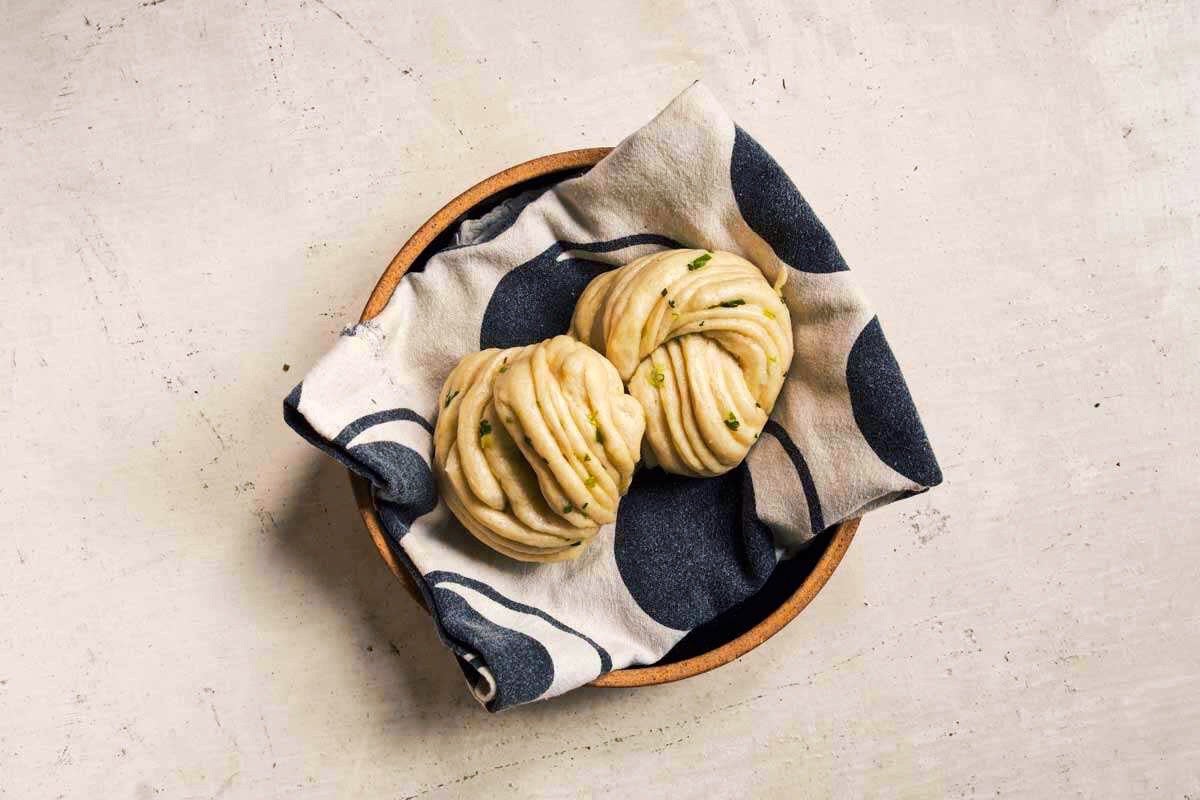
If you have leftover scallions after preparing these delicious buns, try putting them to use in additional recipes like Quick Sourdough Herb and Scallion Pancakes or Cheddar Cheese and Scallion Scones.

